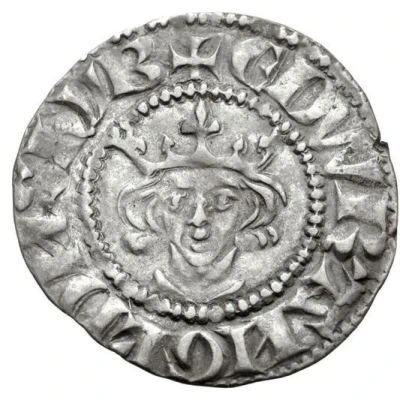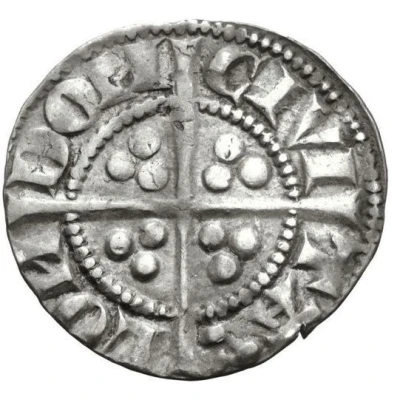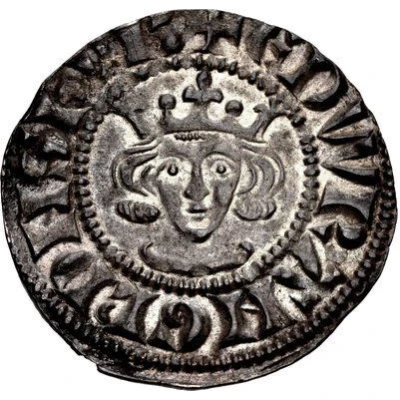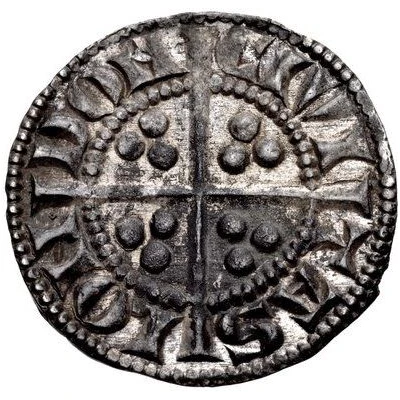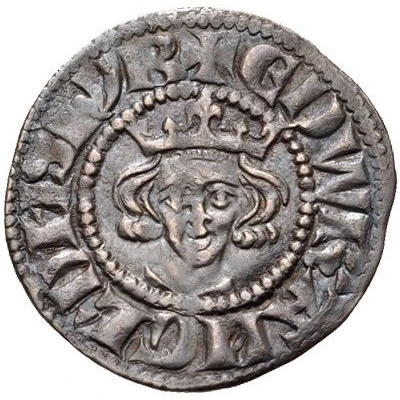
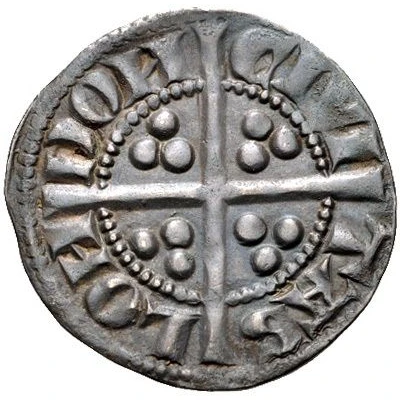

© Classical Numismatic Group, Inc.
1 Penny - Edward I Sterling type; class 2b ND
1280 year| Silver (.925) | 1.39 g | 19 mm |
| Issuer | England (United Kingdom, British Overseas Territories and Crown Dependencies) |
|---|---|
| King | Edward I (1272-1307) |
| Type | Standard circulation coin |
| Year | 1280 |
| Value | 1 Penny (1⁄240) |
| Currency | Pound sterling (1158-1970) |
| Composition | Silver (.925) |
| Weight | 1.39 g |
| Diameter | 19 mm |
| Shape | Round (irregular) |
| Technique | Hammered |
| Demonetized | Yes |
| Updated | 2024-10-08 |
| Numista | N#323723 |
|---|---|
| Rarity index | 87% |
Reverse
Long cross pattée, trefoil of pellets in angles, mint name around.
Script: Latin (uncial)
Lettering: CIVI TΛS LOИ DOИ
Lettering (regular font): CIVI TΛS LON DON
Translation: City of London
Comment
House of Plantagenet (1154-1399), Edward I (1272-1307), Sterling coinage (1279-1307), Class 2b penny.Struck at London and provincial mints, c.1280. For more detail, please see Rod Blunt's website here.
Spink SCBC reference numbers:
The Spink Standard Catalogue of British Coins lists reference numbers in order for individual Edward I New Coinage types struck at the Tower mint, London and after that section, all the different types struck at a given provincial mint are grouped together under one reference number.
Interesting fact
The 1 Penny coin of Edward I, also known as the "Silver Penny," was minted during the reign of King Edward I (1272-1307) and was used extensively in trade and commerce throughout England and its territories. Despite being made of silver, the coin was not as valuable as other coins of its time, and its low value led to it being widely used in everyday transactions. In fact, the coin was so widely used that it became a standard unit of exchange, with many prices being quoted in multiples of pennies. This widespread use of the Silver Penny helped to establish the penny as a fundamental unit of currency in England, a status it would maintain for centuries to come.
